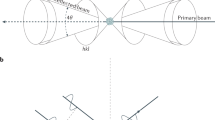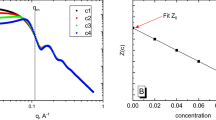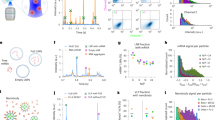Abstract
A METHOD recently reported by Timbrell1 for the determination of particle-size with the light microscope has been applied with slight modification to size determinations of textile-bonding agents with the electron microscope. These materials are dispersions of spherical polymer particles having sizes in the range 0–0.2µ. The normal method of size determination involves measurements on photographic plates obtained at known magnification using a transparent graticule. This method, which is tedious, may be subject to errors due to fatigue of the operator; and the method described has been found much more rapid and reliable.
This is a preview of subscription content, access via your institution
Access options
Subscribe to this journal
Receive 51 print issues and online access
$199.00 per year
only $3.90 per issue
Buy this article
- Purchase on Springer Link
- Instant access to full article PDF
Prices may be subject to local taxes which are calculated during checkout
Similar content being viewed by others
References
Timbrell, V., Nature, 170, 318 (1952).
Author information
Authors and Affiliations
Rights and permissions
About this article
Cite this article
ATHERTON, E. Determinations of Size of Particles with the Electron Microscope. Nature 171, 350–351 (1953). https://doi.org/10.1038/171350a0
Issue Date:
DOI: https://doi.org/10.1038/171350a0
Comments
By submitting a comment you agree to abide by our Terms and Community Guidelines. If you find something abusive or that does not comply with our terms or guidelines please flag it as inappropriate.



